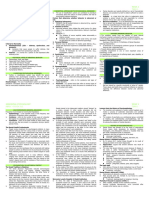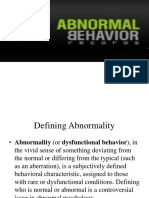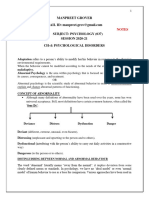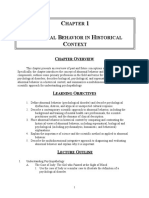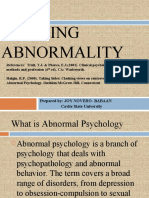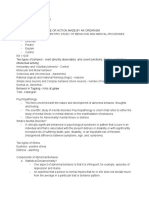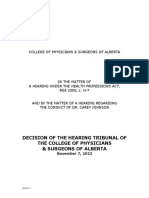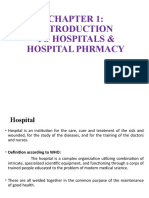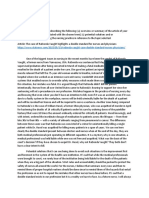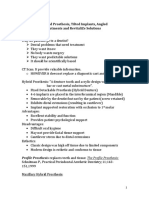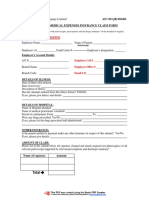0% found this document useful (0 votes)
204 views5 pagesAbnormal Psychology Overview
This document provides an introduction to abnormal psychology, including definitions of normal and abnormal behavior. It discusses criteria for normality such as average behavior, social conformity, and personal comfort. Abnormal behavior is defined using cultural relativism, unusualness, distress, and mental illness. The Four D's model is presented which defines abnormal behaviors as dysfunctional, distressing, deviant, or dangerous. Historical perspectives on abnormality are reviewed, including biological, supernatural, and psychological theories from figures such as Hippocrates, Galen, and Plato.
Uploaded by
Joana FenolCopyright
© © All Rights Reserved
We take content rights seriously. If you suspect this is your content, claim it here.
Available Formats
Download as DOCX, PDF, TXT or read online on Scribd
0% found this document useful (0 votes)
204 views5 pagesAbnormal Psychology Overview
This document provides an introduction to abnormal psychology, including definitions of normal and abnormal behavior. It discusses criteria for normality such as average behavior, social conformity, and personal comfort. Abnormal behavior is defined using cultural relativism, unusualness, distress, and mental illness. The Four D's model is presented which defines abnormal behaviors as dysfunctional, distressing, deviant, or dangerous. Historical perspectives on abnormality are reviewed, including biological, supernatural, and psychological theories from figures such as Hippocrates, Galen, and Plato.
Uploaded by
Joana FenolCopyright
© © All Rights Reserved
We take content rights seriously. If you suspect this is your content, claim it here.
Available Formats
Download as DOCX, PDF, TXT or read online on Scribd
/ 5








